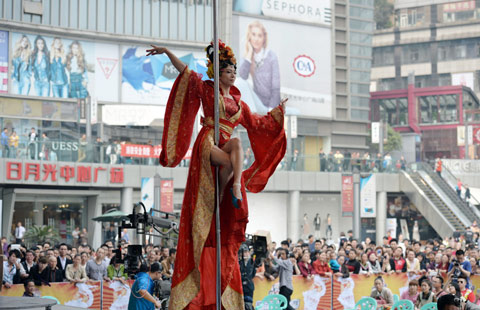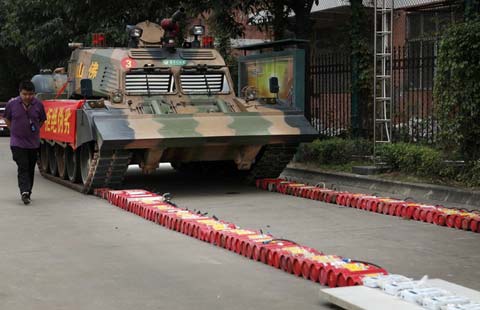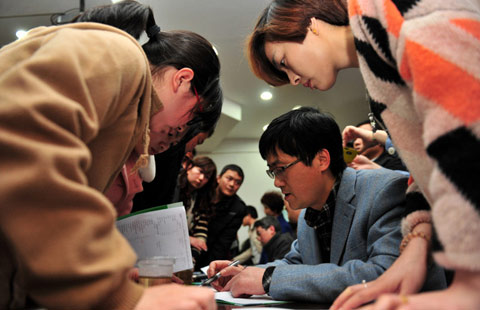

1944
March
The Guangdong Qiongya people's Anti-Japanese Independent Column was set up in Hainan Island, with Feng Baiju as the commander and political commissar.
April 17
In order to open a land transport line, the Japanese army attacked Henan, Hunan and Guangxi with a 500,000-strong force, thus starting the "Operation Number One."
April 22
The Japanese army occupied Zhengzhou.
June 18
Japanese troops occupied Changsha.
August 15
The Fourth Division of the New Fourth Army moved west.
December
Guerrillas fighting in the Zhujiang Delta set up the Zhujiang Column. The Central Column of the Guangdong People's Anti-Japanese Liberation Army was established in central Guangdong. The Hanjiang Column was set up in the Chaozhou-Shantou area.
1945
Early January
The Shanxi-Chahar-Hebei Military Region army started a powerful spring offensive against the enemy.
January
The Taihang Military Region army started a spring offensive.
February 1
The Shandong Military Region army started a spring offensive.
February 4-11
The Yalta Conference: The leaders of the Soviet Union, Britain and the U.S.—Stalin, Churchill and Roosevelt – and their foreign ministers met in Yalta, Crimea, to discuss world problems after the war.
April 20
The Shanxi-Shandong-Henan Military Region army started a spring offensive.
April 23
At the Seventh National Congress of the CPC, Mao Zedong reported "On Coalition Government," an analysis of the situation at home and abroad.
May 2
The Allied forces captured Berlin.
May 10
Germany declared surrender.
May 12
The Shanxi-Chahar-Hebei Military Region army started a summer offensive.
June 5
The Shandong Military Region army started a summer offensive.
July 26
In the form of a joint declaration by China, the U.S. and Britain, the Potsdam Proclamation was published urging Japan to surrender.
August 6
The U.S. dropped the first atomic bomb on Hiroshima. On August 9, it dropped the second atomic bomb on Nagasaki.
August 8
According to the Yalta Agreement, The Soviet Government declared war on Japan. By cover of night, the Soviet Red Army crossed the border to attack the Japanese army.
August 9
The Eighth Route Army and the New Fourth Army started their counteroffensive against the Japanese army.
August 15
The emperor of Japan addressed his nation by radio announcing acceptance of the Potsdam Proclamation and Japan's unconditional surrender to the Allies.
September 2
Japan surrendered to Allied countries. The official signing ceremony of the instrument of surrender was held on the American battleship Missouri in Tokyo Bay.
September 9
Representing Japan, Yasuji Okamura signed the instrument of surrender to China in Nanjing.







